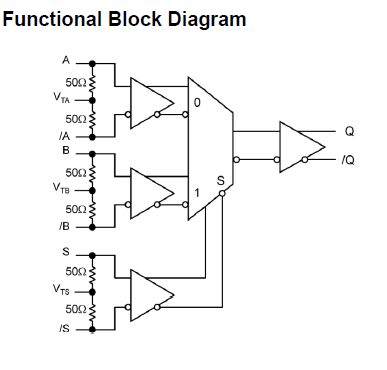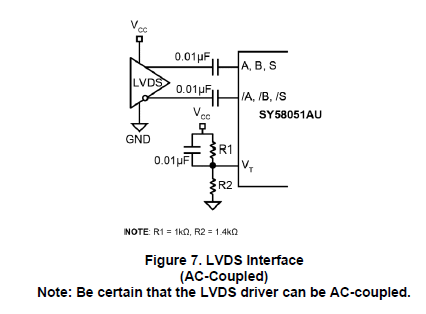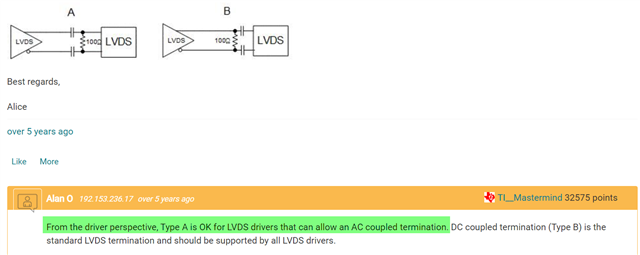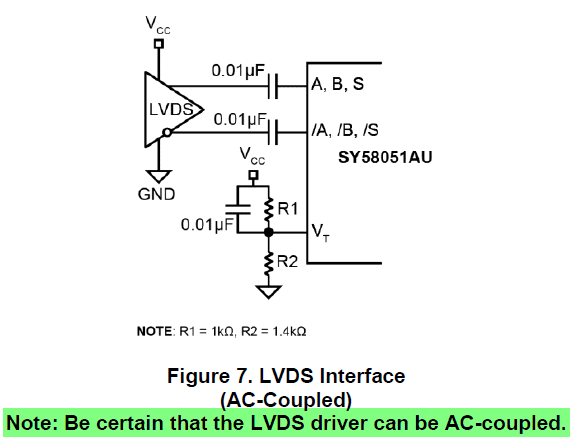Other Parts Discussed in Thread: LMK00301
Hi team,
One of our customers uses the TLV3801 comparator for AC coupling output, the circuit is as follows, but the output waveform is abnormal and the waveform is as follows.
There are a total of 16 TLV3801 chips, and the network label can be ignored, as the TLV3801 and SY58051AU are separate sub-module designs. Not sure if the output waveform is related to the interconnections between the boards.
The next stage circuit of the TLV3801 is SY58051AU. SY58051AU datasheet:SY58051AU.PDF
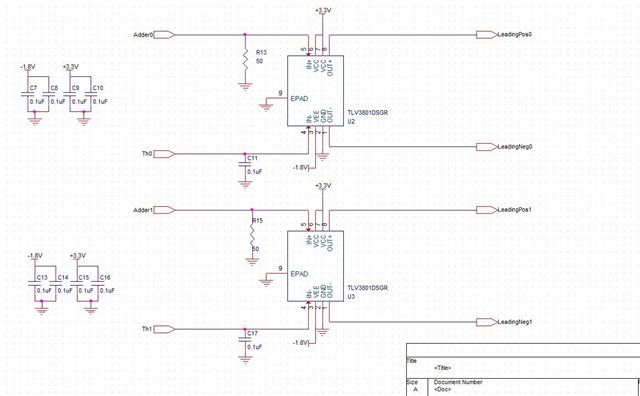
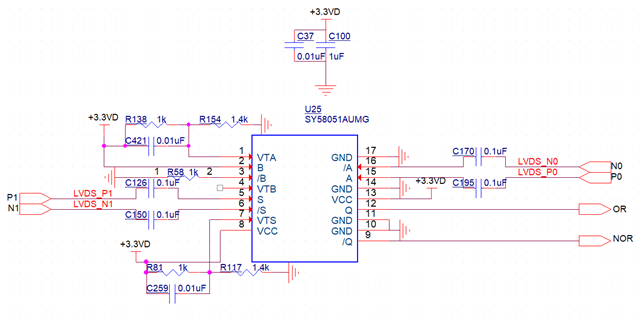
abnormal waveform:
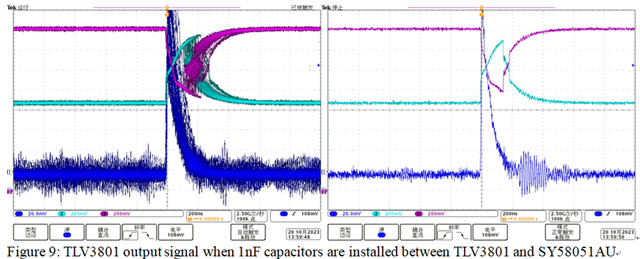
The DC coupling output is normal, i.e. remove the AC coupling capacitance, disconnect the SY58051AU and install a 100 ohm resistor between OUT+/-. The measurement TLV3801 output is OK:

The customer refers to the application report below to connect the circuit. I also found the circuit for the LMK00301 datasheet section below, not sure why it is different from the circuit in this application report.
AC Coupling Between Differential LVPECL, LVDS, HSTL and CML (Rev. C)
Could you help please analyze why the TLV3801 cannot have an AC coupled output? And why is the circuit connection recommended in this application report different from that in the LMK00301 datasheet? Could you please leave your comments
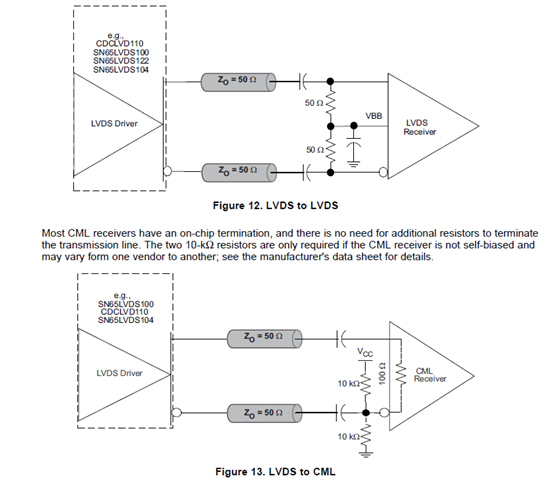
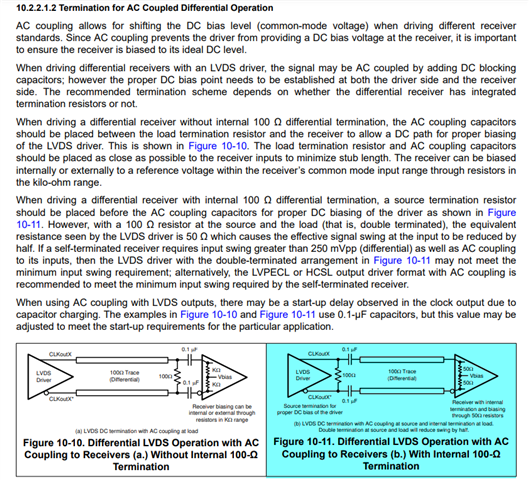
Best Regards,
Amy Luo


